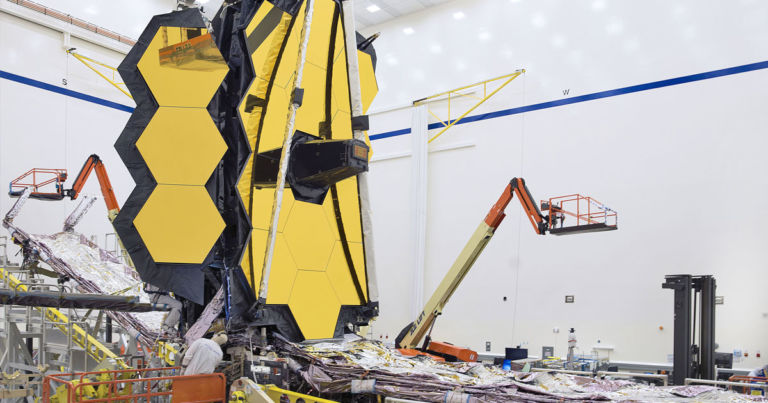NASA’s much-awaited James Webb Space Telescope may finally get its place in the night sky: NASA says it’s now completed its final litany of critical software and electrical systems tests, theoretically clearing it for launch as soon as 2021.
It’s the “largest and most technically complex space science telescope NASA has ever built,” according to a statement. It’s an international collaboration of unprecedented proportions between NASA, the European Space Agency, and the Canadian Space Agency.
Engineers worked 24 hours a day for 15 days straight, executing over a thousand scripts and instructions — a 1,370 step process, according to NASA.
Development of the delay-plagued orbital spyglass began in 1996, with an initial launch planned in 2007. Now, after a slew of major redesigns, countless delays, and budget overruns, NASA is tentatively eyeing a March 2021 launch. The space agency will reevaluate launch readiness this month.
The 21-feet-wide telescope will observe distant space, orbiting the Sun instead of the Earth, but at a distance called the Lagrange point that will keep pace with the Earth, as illustrated in the animation below.
An origami-like sunshield the size of a tennis court will keep it cool.
Its iconic 18 hexagonal mirror segments, each over four feet in diameter, will combine post-launch into a giant reflector with an area of 25.4 square meters (273 square feet). The huge reflector will allow the telescope to observe the stars in much lower frequency ranges compared to its predecessor, NASA’s Hubble space telescope. Each mirror is fabricated from lightweight yet resilient beryllium.
The…



